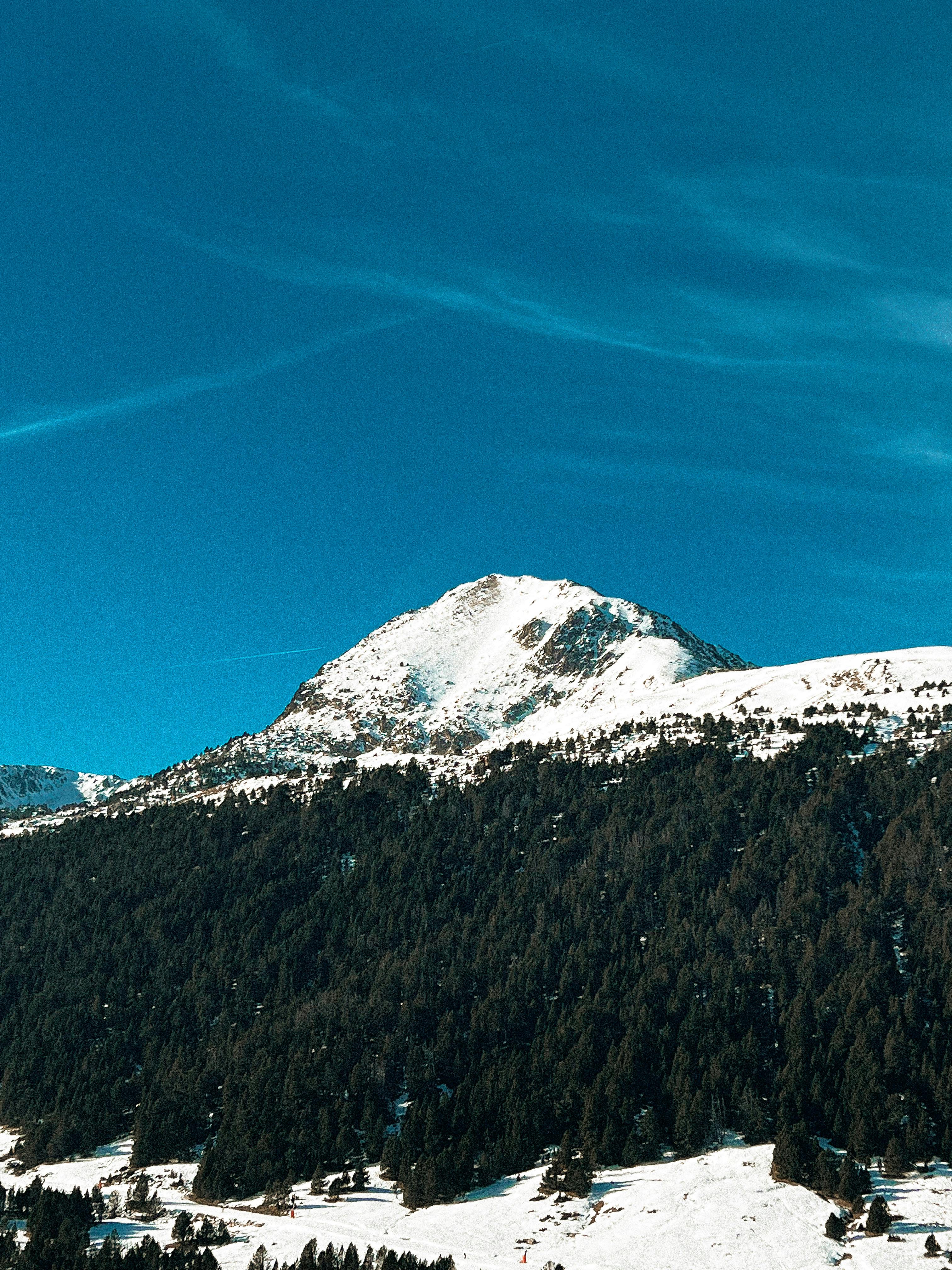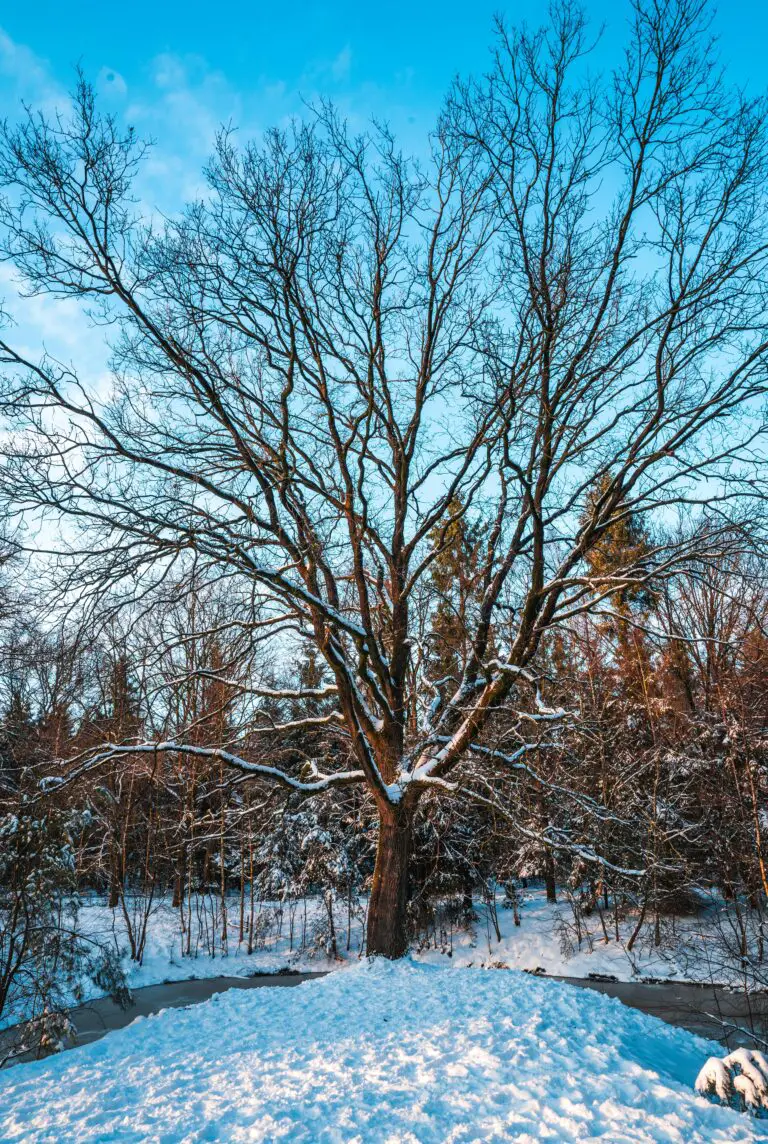Introduction to Sedum and Winter Changes
Meet Sedum, nature’s resilient warrior that laughs in the face of winter! These sturdy plants are a gardener’s ally, with an innate ability to shrug off the cold clutches of frost and snow. But have you ever wondered, as the biting winter chill sets in and most botanicals bow down, what a Sedum does to stand tall? Well, let’s dive in and unwrap the secrets of Sedum’s winter wardrobe.
Sedum, also known as Stonecrop, belongs to a family of succulents that have mastered the art of survival in diverse conditions. Imagine a plant that thrives in rocky, nutrient-poor soils yet transforms into a lush carpet of greenery when given a speck of care—it’s none other than Sedum. As winter approaches, these plants don an array of rustic hues, from deep burgundy to a golden straw color, reminiscent of a sunset frozen in time. Their plump, water-storing leaves and stout stems don’t succumb to the harshness of the cold; instead, Sedum plants gracefully adjust, proving their incredible hardiness.
If you stroll through a winter garden, you might catch the silhouette of Sedum against the crisp white snow, standing firm and unyielding. Their tactile leaves tinged with frost become a beacon of persistence and a reminder that verve exists even in the quiet slumber of winter. These features not only make them a marvel to onlookers but also add layers of texture and contrast to the otherwise barren wintry landscapes.
Let’s take a real-world example—Sedum ‘Autumn Joy’, a variety that carries its crown of star-shaped blossoms well into the chilly months. The flower heads, initially a warm pinkish hue, mature into a rich, coppery tone, and remain architecturally interesting throughout winter. Indeed, these steadfast plants are a testament that with a bit of grit, one can flourish despite the frost.
For those who wish to delve even deeper into the world of Sedum and its kin, don’t miss out on our handy guide, “When to Plant Sedum: Timing for Lush Succulent Gardens”. It’s a treasure trove of tips to ensure your Sedum plants remain vibrant and lively year-round.
Characteristics of Sedum in Winter
When winter casts its chilly cloak over the garden, the resilient Sedum stands defiant, its foliage a testament to survival in the cold. This hardy perennial, often known as ‘Stonecrop’, undergoes a captivating transformation as the frosty months approach. Let’s delve into the kaleidoscope of colors and textures that characterize Sedum in its winter wardrobe.

As the temperature drops, Sedum’s foliage begins a mesmerizing metamorphosis, transitioning from the lush greens of summer to a range of fiery hues and deep, moody tones. Shades of burgundy, copper, and rust become the new norm, with each species and cultivar displaying its unique winter hue. This natural spectacle adds warmth and depth to the barren winter landscape, offering a visual reprieve from the stark and leafless surroundings.
Dormancy is another winter hallmark for Sedum plants. This period of rest is crucial as it allows these succulents to conserve energy for the upcoming spring explosion of growth. But don’t let their sleepy state fool you; Sedum’s robust root systems continue to anchor them firmly to the earth, ready to soar back to life when winter’s grip loosens.
Moreover, Sedum has an ingenious approach to dealing with the cold. Their fleshy leaves and stems, which are lush during the growing seasons, are designed to retain moisture, enabling them to withstand freezing temperatures. Some might say they wear their very own built-in ‘winter coats,’ protecting their vital structures until the sun’s warmth returns.
For an in-depth look at gardening strategies to safeguard your Sedum during the chillier months, explore the wealth of resources available. And if you’re seeking tips to maintain your rock garden oasis with these winter warriors, rest assured that with a sprinkle of care, your Sedum will not only survive but thrive, ready to greet the spring with vitality and vigor.
Popular Sedum Varieties and Their Winter Looks
As the winter months approach and the days get shorter, the garden takes on a different character, especially for the diverse varieties of Sedum, often referred to as stonecrop plants. Their resilience in cold weather is quite remarkable, and in this frosty period, their true splendor often shines through. Let’s delve into how these hardy succulents transition into their winter attire, shall we?
When you imagine a garden in winter, it’s easy to think of a barren, drab space, but let’s turn that notion on its head. The Sedum ‘Autumn Joy’, for instance, becomes a beacon of subdued elegance, with its flower heads transforming into rich bronze and rust hues, which persist like floral embers amongst the snow. Though many perennials retreat to the ground during winter, ‘Autumn Joy’ stands tall and becomes the statuesque centerpiece of the winter garden.
Now, let’s talk about the ever-popular Sedum ‘Dragon’s Blood’. This low-growing variety lives a double life. During spring and summer, it’s a carpet of green, but as autumn wanes, it takes on a dramatic turn—foliage darkening to a deep red almost as if the plant has captured the essence of the setting sun within its leaves. It’s a fantastic groundcover that adds color when most other plants have faded away.
Perhaps one of the most fascinating transformations can be seen in the Sedum ‘Frosty Morn’. This variety is already known for its variegated leaves, which are a spectacle in the growing season. However, in winter, it’s as if the plant acknowledges the season by adorning a frosty white edge, blending effortlessly with the snowy landscapes. Truly, nature couldn’t plan a better winter camouflage.
For those interested in cultivating these winter wonders, good plant care is essential. Sedums are relatively low-maintenance, but understanding their needs will ensure that the winter showcase is as stunning as it can be.
In this frosty embrace, even the taller Sedum telephium varieties take on a new role. While their flowers may dry, they add an architectural element, with their stalks coated in ice creating a striking visual against the pale winter sun. Imagine, if you will, a natural sculpture garden crafted by the chill of winter. It’s important to note that the variations in color and texture of sedum during winter not only create visual interest but also provide essential sustenance for local wildlife. Birds, in particular, are known to feed on the dried seed heads, making sedum an important component of the wintertime ecosystem.
Interested in making your succulents thrive year-round? Check out our comprehensive guide to succulent care to learn more about maintaining these resilient beauties through every season.
As we’ve seen, sedums are not just summer stars; they are true heralds of winter beauty. Their ability to stand out in the coldest months is a testament to their versatile allure, ensuring that even in winter, your garden retains a spark of life and color. So the next time the mercury drops, take a moment to appreciate these hardy succulents, for they show us that even in dormancy, there is life waiting to be celebrated.
The Impact of Snow and Frost on Sedum
When the chill of winter sets in, the verdant tapestry of garden foliage often transforms into a stunning display of frosty hues and snowy blankets, and Sedum plants are no exception. As resilient as they are attractive, these succulent beauties undergo a dramatic change when winter adorns their foliage with a frost-kissed embrace.
Imagine stepping out on a crisp winter morning to find your once-bright Sedum carpet speckled with delicate ice crystals — the garden now glistening like a scene from a wintery fairy tale. These hardy perennials, equipped with thick, moisture-retentive leaves, possess innate survival strategies that rival even the toughest of winter warriors. While snow covers the earth in a silent, white shroud, Sedums enter a state of dormancy, conserving energy and reducing metabolic functions to outlast the cold.
But what is truly fascinating is how they manage to not only survive but also maintain their striking appearance under a veil of snow and frost. The colors of Sedum foliage can deepen, intensifying into rich purples, reds, or bronzes that seem to defy the bleakness of the season. Contrasted against the snow, these plants capture the splendor of winter in their leaves, standing out as bold sentinels in the otherwise dormant garden landscape.

Yet, the beauty of Sedum in winter isn’t merely skin-deep. This time of year reveals their durability and the clever mechanisms they deploy to preserve life in freezing temperatures. The snowy insulation keeps them snug while the frost serves as a warning sign of the careful balance they must maintain — too much moisture from melting snow can be detrimental, leading to rot. Hence, well-draining soil becomes their best ally, ensuring they emerge from winter unscathed.
For those who marvel at the resilience of nature, observing Sedum as it braves the winter weather can be a captivating study. It shows that even in the depths of the coldest season, life endures, adapts, and continues to enchant with its persistent beauty — a reminder that there is indeed wonder to be found in the quiet slumber of winter’s touch.
Sedum Winter Care Tips
As the cool kiss of winter graces our gardens, Sedum plants—those resilient succulent beauties—adopt a more subdued posture. But fear not, plant aficionados! With a few clever strategies, you can ensure your Sedum remains the jewel of your wintertime garden. Let’s unwrap the secrets to nurturing your Sedum in the chillier months!
Firstly, Sedum demands minimal watering once Jack Frost starts nipping. Rest assured, Sedum’s succulent nature means it’s well-equipped to retain moisture. However, oversharing your water pitcher could lead to root rot, surely the scorn of any plant lover’s winter tale. A light sprinkle is all it takes—think of it as the occasional sips of warm cocoa by the fireside.
The great outdoor or the cozy indoors? Positioning your Sedum can feel like choosing seats at a winter banquet. If shielded by a porch or a similar structure, your green friend can brave the outdoors. But for those without such armor, consider a winter retreat indoors. A spot where the sun plays peek-a-boo through the windowpane is your Sedum’s version of savoring the scenery without facing winter’s bite.

Protection measures? Indeed; just as we layer up, your Sedum appreciates a blanket. A layer of mulch acts like a warm scarf, offering comfort from frosty drafts. And when the mercury plummets, consider frost cloth—a defender against the harshest of winter nights. There’s no need to tuck your Sedum into a snowdrift, but a shield from the frost preserves those lush leaves for spring’s return.
Remember Tom, from two doors down? His Sedum collection was the talk of the town last spring. His secret? These very winter care tips. He’d regale anyone who’d listen about his strategic watering plan and the niche he carved by the bay window for his Sedum retreat. That’s the spirit we’re channeling—practical, protective, and prompt care that pays off when the snow melts away.
Embracing the Ebb and Flow of Seasons
Every season paints its own canvas in our gardens, and winter is no exception. Your Sedum, nestled in its wintery habitat, isn’t just surviving—it’s preparing to thrive in the spring to come. Be the curator of this living artwork, and watch as your winter wisdom results in a bountiful spring showcase of Sedum resplendence.
Winterizing Your Sedum Garden
As the crisp air of winter begins to whisper through the leaves, it’s time to tuck our Sedum friends in for their seasonal slumber. Picture your Sedum garden as a cozy little village, where each plant is preparing to drape itself in a gauzy blanket of snow. The key to orchestrating this serene winter tableau? Preparation, my gardening comrades!
Let’s roll up our sleeves and embark on a gardening adventure that’ll ensure your Sedum plants emerge in spring as jubilant as a sunbeam breaking through the frost. We’re going to snip, tuck, and protect like the seasoned garden whisperers we are!
First things first, grab those pruning shears. Sedum’s tenacity is legendary, but a little trim encourages them to conserve their vigor when it matters most. A snip here, a snip there, and voila! Your Sedum is sporting the latest in winter chic. Imagine your garden being the talk of the town with your perfectly pruned perennials setting a vision of wintry perfection.
Now, let’s gather that mulch. A sprinkle here, a sprinkle there—your Sedum is now donning a fashionable, insulating overcoat. But mulch isn’t just about appearances. Like a hearty stew for the soul, mulch nourishes your plants and shields them from the cold clutches of winter. Our goal is to create a snug sanctuary that promises your Sedum’s safe passage to spring. Consider it a botanical bed-and-breakfast, where your plants can snooze without a worry!
Lastly, let’s talk coverings. On especially chilly nights, a blanket of frost cloth can be the difference between a winter wonderland and a frozen wasteland. By fashioning a shield against the frosty elements, you’re ensuring that your Sedum wakes from its winter nap ready to stretch its leaves towards the sun.
Imagine peeking out your frost-rimmed window, a steaming mug of cocoa in hand, to see the winter masterpiece you’ve created. Your Sedum stands proud against the elements, each plant a testament to the nurturing care you’ve provided. And when the winter winds howl, fear not, for your Sedum garden is a fortress against the cold, each plant a resilient sentinel in the tranquil hush.

So there you have it, folks—the blueprint for escorting your Sedum through the merriments of winter. With a sprinkle of care and a dash of foresight, your garden will not only survive the chill but will thrive when the season of renewal comes knocking. Now, let’s get those gloves on and show winter that our Sedum garden is not just surviving, it’s flourishing!
Frequently Encountered Sedum Winter Challenges
Imagine peeking out your frosty window at a tiered tapestry of Sedum, steadfast against the stark winter tableau. Though the mercury dips, your hardy Sedum can emerge victorious with a bit of savvy stewardship. Winter’s kiss, however, does not come without potential perils for these succulent beauties. Acknowledging these hibernation hurdles is the first step toward ensuring that your Sedum greets spring with vigor.

First off, Sedum’s succulent leaves, which bask in summer’s glow, are now a beacon for lingering moisture—an invitation for rot and disrepair. The key to combating this calamity is ensuring proper drainage. A real-life gardener’s tale cautions us, narrating how a seemingly benign wet spell nudged her cherished Sedum ‘Autumn Joy’ into an untimely decay. Learn from these garden tales and keep your Sedum’s feet dry!
Another challenge is the intermittent thaw-freeze cycle that winter whimsically orchestrates. This fickle fluctuation can pry sedum roots from their earthen embrace, leaving them exposed to the frigid air. ‘Joe,’ a seasoned pro with Sedum, recalls how he mulched his green charges religiously, providing a snug blanket that shielded them from winter’s cruel game of thermal tug-of-war.
Lastly, we must not ignore the quiet threat of winter’s camouflage—blankets of snow that are both a protector and a potential peril. Heavy snowfall, although insulating, can become an icy tomb for Sedum if it overstays its welcome. Minimize risk by gently brushing away excess snow, just as ‘Emily’ did on her rooftop Sedum sanctuary, thus averting an icy embrace.
Confronted with these Sedum winter challenges, the key to success lies in your hands. Adequate drainage, a mulch mantle, and judicious snow management will see your Sedum through until winter’s curtain call.
Sedum’s Resilience: A Testament to Survival
Wander through a winter garden, and you’ll witness a silent symphony of endurance. At the heart of this resilience showcase is the steadfast Sedum, a plant that doesn’t just survive the cold months but comes alive with a subtle, stoic beauty. Winter casts a serene blanket over the landscape, and amidst this icy spell, Sedum stands valiant, a vivid reminder of life’s persistent pulse.

Picture the verdant greens and vibrant blooms of Sedum softening to muted hues of brown and ruby, as the frost weaves its crystalline magic across their foliage. Leaves that once splayed wide open to the sun now hug close, tucking in as if to conserve every bit of warmth. Unlike many of their floral counterparts, Sedum doesn’t wither away; it transforms, adopting a rugged elegance that adds depth and texture to the stark winter garden.
The remarkable adaptability of Sedum is not just visual poetry but a lesson in botanical resilience. These hardy succulents store water in their leaves, enabling them to withstand drought and chill alike. Their thick, fleshy leaves act as little reservoirs, allowing Sedum to stand unperturbed by the snow’s smothering embrace, a testament to their incredible survival mechanisms. It’s this evolutionary mastery that sees Sedum through the bleakest months, ready to burst back in a springtime renaissance.
As gardeners and nature enthusiasts alike find solace in the stubborn spirit of Sedum, this plant teaches us about perseverance. There’s a certain solace in observing how life clutches to the familiar, rooting ever deeper and waiting out the cold. These plants don’t simply wait for winter to pass; they wear the season like a cloak, equally splendid in their wintry guise. And that, perhaps, is the greatest survival mechanism of all: embracing adversity with grace, standing steadfast through the cycles of life.
Frequently Asked Questions
As winter sprinkles its frosty glitter across the landscape, the sedum plant transforms into a stoic beauty amidst the cold. If you’re curious about the seasonal changes that grace this succulent, you’re not alone. Let’s dive into some of those burning questions you might have about what sedum looks like when winter rolls around.
Does Sedum Die Back in Winter?
Unlike some garden regulars that tuck away until spring, sedum stands its ground. Many varieties maintain their form, albeit with a muted color palette. Think of it as nature’s way of providing a visual symphony—whispering hues of russet and ivory rather than the loud summer greens and bursts of color.
How Can I Identify Sedum in the Snow?
Snow might be the great equalizer in a garden, but sedum has a trick up its sleeve. Its sturdy stems usually rise above the snow blanket, crowned with dried flower heads that glisten like tiny rustic chandeliers. To spot them, look for these subtle, yet striking silhouettes interrupting the smooth snow canvas.
What Makes Sedum Ideal for Winter Landscapes?
Resilience and visual harmony make sedum a winter garden staple. It’s like that friend who’s unphased by the cold, donning a layered outfit that’s both practical and stylish. Sedum brings that kind of energy to your winter beds, offering a contrast to the soft snow or barren branches around it.
Can Sedum Survive Harsh Winters?
Remarkably, yes. Sedum is built for endurance. Much like a seasoned mountaineer facing a blizzard, it waits out the worst of the winter’s fury. Its fleshy leaves may wither, but its core remains ready to spring back to life when temperatures rise. It’s this hardiness that endears it to gardeners in cooler climates.
Curious about just how enchanting sedum can look when Jack Frost pays a visit? Behold:

How Do I Care for Sedum During Winter?
Think of sedum care in the cold months as a minimalist art form. There’s very little you need to do. If anything, avoid the temptation to pamper it. These plants prefer to be left alone, allowing their natural cold-weather coping mechanisms to take the lead.
Will My Sedum Bloom Again After Winter?
Absolutely. Once the chill in the air begins to soften, you’ll see sedum shake off its winter guise. Fresh growth will emerge, setting the stage for another cycle of blooms and vibrant life. It’s the perennial promise of renewal that makes this plant a garden favorite.
By understanding the seasonal behavior of sedum, you can appreciate its contribution to the wintery landscape. It’s a testament to the enduring beauty of nature, standing boldly against the frost and providing a subtle yet gorgeous spectacle amid the chill.


